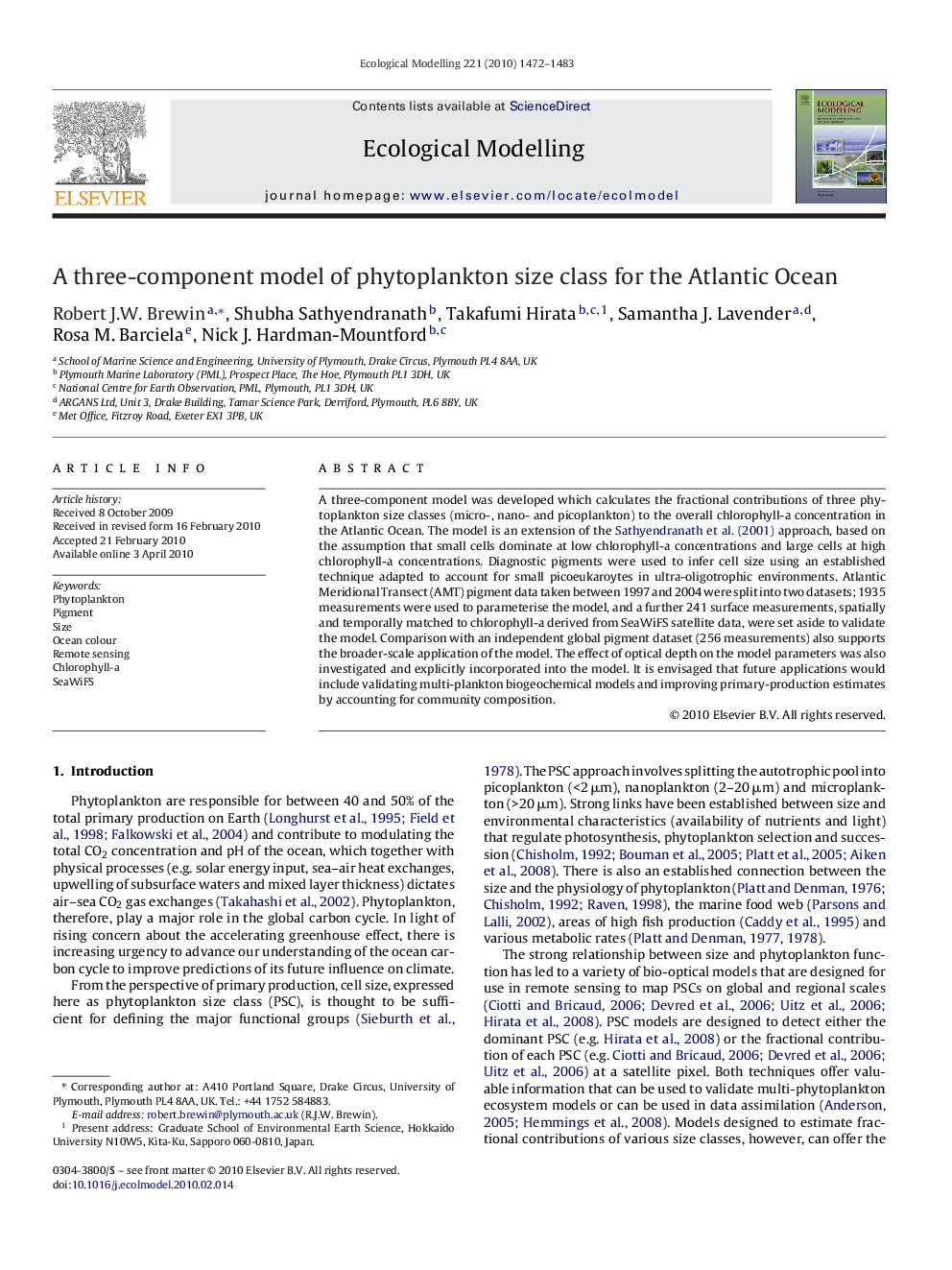| Article ID | Journal | Published Year | Pages | File Type |
|---|---|---|---|---|
| 4377414 | Ecological Modelling | 2010 | 12 Pages |
A three-component model was developed which calculates the fractional contributions of three phytoplankton size classes (micro-, nano- and picoplankton) to the overall chlorophyll-a concentration in the Atlantic Ocean. The model is an extension of the Sathyendranath et al. (2001) approach, based on the assumption that small cells dominate at low chlorophyll-a concentrations and large cells at high chlorophyll-a concentrations. Diagnostic pigments were used to infer cell size using an established technique adapted to account for small picoeukaroytes in ultra-oligotrophic environments. Atlantic Meridional Transect (AMT) pigment data taken between 1997 and 2004 were split into two datasets; 1935 measurements were used to parameterise the model, and a further 241 surface measurements, spatially and temporally matched to chlorophyll-a derived from SeaWiFS satellite data, were set aside to validate the model. Comparison with an independent global pigment dataset (256 measurements) also supports the broader-scale application of the model. The effect of optical depth on the model parameters was also investigated and explicitly incorporated into the model. It is envisaged that future applications would include validating multi-plankton biogeochemical models and improving primary-production estimates by accounting for community composition.
